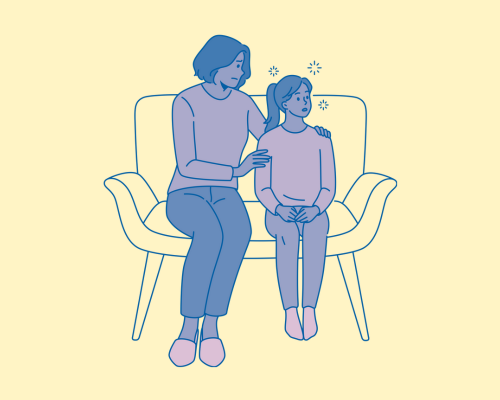Self-harm
For parents/carers
This section is for parents and carers who may be worried about self-harm (hurting yourself on purpose) and their teenager. It is also for parents who have a teenager who has a friend who self-harms.

A typical scenario
Your outgoing child has begun to act differently, spending long periods in their bedroom. You think they’re nursing a broken heart; it wasn’t so long ago that their relationship ended and they do have a lot of schoolwork to do.
You can’t think why they don’t want to do things they used to find relaxing, swimming for example. Then, when they’re changing one day you catch a quick glimpse of their legs – they’ve got long, precise cuts on them, some of which look fresh and sore. You have to catch yourself from not exclaiming.
The next day you ask them downstairs to ‘help out with the washing’ and you have a look at their forearms – more cuts. They’re not a ‘dramatic child’; you think you are a good, communicative parent. What’s gone wrong? You don’t know what to do …
Four identification facts
- Self-harm consists of a variety of self-injurious behaviours that cause damage to the skin and body
- Self-harm is almost always due to the person experiencing strong and difficult emotions
- Self-harm can be linked with depression, increased alcohol or drug use, attention deficit disorder and a variety of mental health conditions such as, in a small group of individuals, emotionally unstable personality disorder
- Having a family member who self-harms increases the chances of the behaviour occurring
Four clues
- Self-harm marks on arm, legs or body
- Self-harm instruments in belongings
- Stopping activities that require showing their body or becoming increasingly secretive about their body
- Unexplainable blood stains on clothing
Four steps to assist with change
Visit our Further Advice page for details of other organisations that can help.



